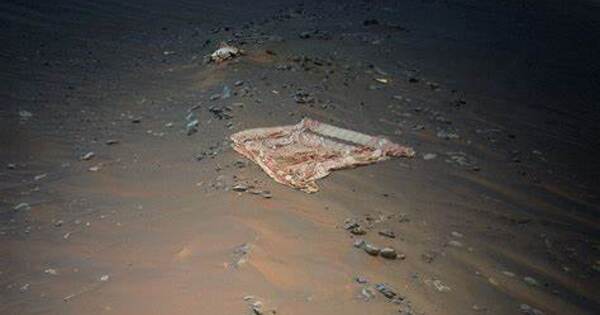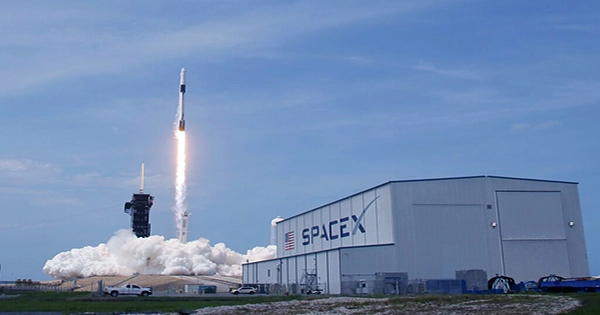The presence of liquid water on Mars’ surface may have been shorter than previously imagined. Channel landforms known as gullies, which were previously considered to be generated only by liquid water, can also be formed by the action of evaporating CO2. This is the result of a new study by Lonneke Roelofs, a planetary researcher at Utrecht University. “This influences our ideas about water on Mars in general, and therefore our search for life on the planet.” The study’s findings are published this week in the journal Communications Earth and Environment.
“The martian atmosphere is 95% CO2,” Lonneke Roelofs explains. “In winter, air temperatures drop below -120 degrees Celsius, which is cold enough for CO2 in the atmosphere to freeze.” CO2 gas can freeze directly to CO2 ice, skipping the liquid phase. The process is comparable to frost on Earth, in which water vapour produces ice crystals and covers the landscape in a white layer. Warmer spring temperatures, combined with the thin Martian atmosphere, cause CO2 ice to evaporate directly back to gas, skipping the liquid phase. “That is referred to as’sublimation’.
The process is extremely explosive due to Mars’ low air pressure. The created gas pressure pushes sediment grains apart causing the material to flow, similar to debris flows in mountainous areas on Earth. These flows can reshape the Martian landscape — even in the absence of water.”
Scientists have long speculated that CO2 ice may be the driving factor behind these Martian landscape patterns. “But those hypotheses were mainly based on models or satellite studies,” Roelofs goes on to say. “Our experiments in a so-called ‘Mars chamber’ allowed us to recreate this process under Martian circumstances. Using this specialized lab equipment, we were able to directly see this process. We even discovered that debris flows driven by CO2 ice on Mars flow almost as efficiently as those caused by water on Earth.”
Our experiments in a so-called ‘Mars chamber’ allowed us to recreate this process under Martian circumstances. Using this specialized lab equipment, we were able to directly see this process. We even discovered that debris flows driven by CO2 ice on Mars flow almost as efficiently as those caused by water on Earth.
Lonneke Roelofs
Extraterrestrial life
“We know for sure that there was once water on the surface of Mars. This study does not prove the contrary,” Roelofs says. “But the emergence of life likely needs a long period where liquid water was present. Previously, we thought that these landscape structures were formed by debris flows driven by water, because of their similarity to debris flow systems on Earth.
My research now shows that, in addition to debris flows powered by water, the sublimation of frozen CO2 can also serve as a driving force behind the formation of these Martian gully landscapes. That pushes the presence of water on Mars further into the past, making the chance of life on Mars smaller.” And that makes us even more unique than we thought.

Why Mars?
But what draws someone to landscapes located 330 million kilometers away? “Mars is our nearest neighbour. It is the only other solid planet near our solar system’s ‘green zone’. The zone is precisely distant enough from the sun to support liquid water, which is required for life. So Mars is a site where we might uncover answers to concerns about how life evolved, including potential extraterrestrial life,” says Roelofs.
“Plus, studying the formation of landscape structures on other planets is a way for us to step outside our Earthly context. You ask different questions, which leads to new insights on processes here on Earth. For example, we can also observe the process of gas-driven debris flows in pyroclastic flows around volcanoes, here on Earth. So this research could contribute to a better understanding of terrestrial volcanic hazards.”
The presence of debris flows and associated geological features can provide valuable information about Mars’ past habitability. They can help scientists identify regions where conditions might have been favorable for life, such as the presence of liquid water and organic materials. Overall, studying debris flows on Mars offers a unique window into the planet’s dynamic past and helps scientists piece together the puzzle of its geological and climatic history.
















